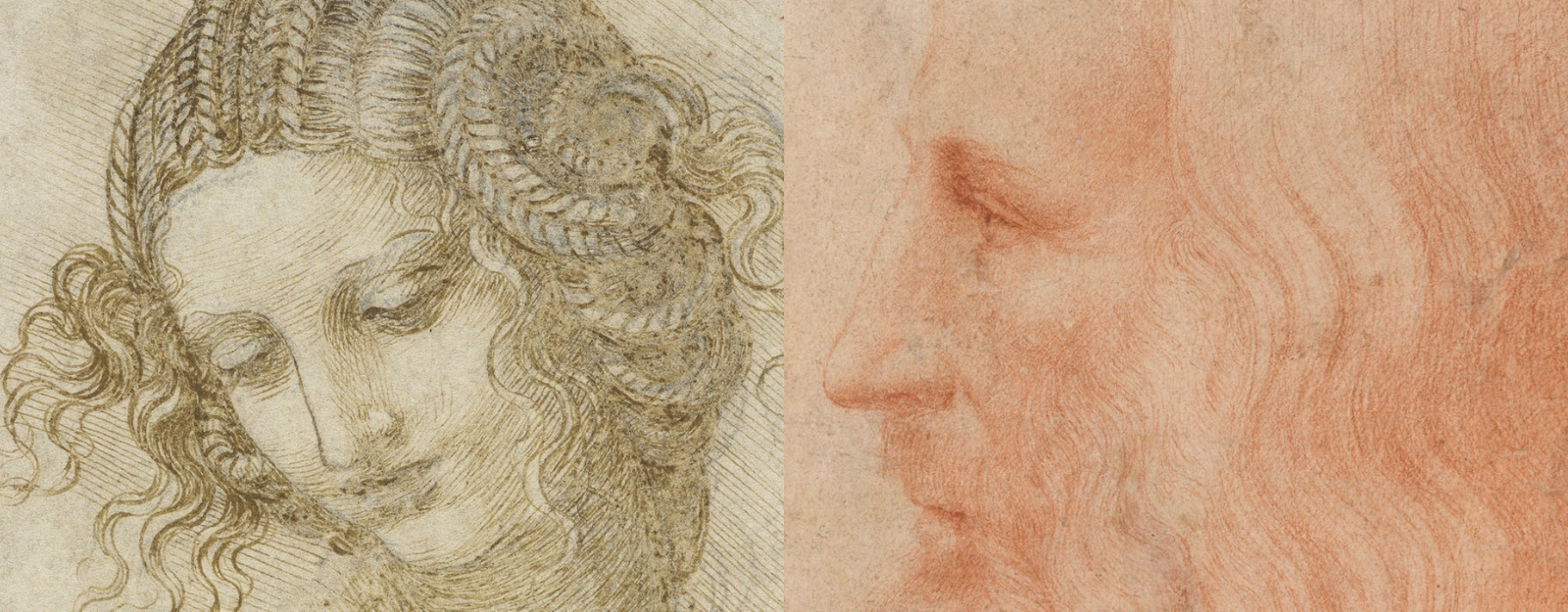Leonardo in the Royal Collection
A closer look at Leonardo da Vinci's works

Leonardo da Vinci was the archetypal 'Renaissance man', accomplished in painting, sculpture, architecture, music, anatomy, engineering, cartography, geology and botany.
The Royal Collection holds around 550 of Leonardo’s drawings – the most important group in the world. Only a small proportion of these drawings are connected directly with his paintings and other artistic projects, most of which were never realised.
The remainder were Leonardo's attempt to record and understand the infinite variety of the world around him, for he always maintained that an image transmitted knowledge more accurately and more concisely than words. Leonardo's drawings therefore allow a unique insight into the thoughts, researches and vision of one of the greatest minds of the Renaissance.
The Life of Leonardo da Vinci ©
Leonardo da Vinci in the Royal Collection
At his death in France in 1519, Leonardo bequeathed his drawings and notebooks to his pupil Francesco Melzi, who took them back to his family villa near Milan.
After Melzi's death around 1570, this collection passed to the sculptor Pompeo Leoni, who arranged the drawings loosely by subject, and pasted them into the pages of at least two large albums. One of these was brought to England in the 1620s, and entered the collection of Thomas Howard, 14th Earl of Arundel.
On the outbreak of the English Civil War, Arundel left England, and there is no further record of the Leonardo volume until 1680, when it was noted as in the Royal Collection, having possibly been presented to Charles II by Arundel’s grandson.
The drawings were removed from the album during the reign of Queen Victoria and mounted individually, and in the early 20th century many were stamped in the corner with the cipher of Edward VII. Because light can damage drawings, the Leonardos cannot be on permanent display, and they are usually housed in boxes in the Print Room at Windsor Castle. But they are regularly shown in exhibitions at The King’s Galleries, and frequently lent to exhibitions across the world.
Leonardo's drawing materials
In this short film, conservator Alan Donnithorne explores the materials that Leonardo used to produce his magnificent drawings, such as metalpoint, ink and red chalk. Using examples from the holdings of the Royal Collection at Windsor Castle, the film looks at how Leonardo achieved the full range of effects, tailoring his materials to particular types of drawing.
Leonardo's drawing materials ©
The Life of Leonardo da Vinci
What do Leonardo's drawings tell us about his life and achievements?
Leonardo's Study of Anatomy
Why are Leonardo's drawings of the human body so revolutionary?
Top 10 Leonardo Drawings in the Royal Collection
Learn more about some of the highlights in the Collection
School Resources
From anatomical drawings to botanical illustrations, maps to mechanical engineering plans, pictographs to artistic sketches and so much more, Leonardo’s drawings give us a glimpse into his endlessly enquiring mind.







